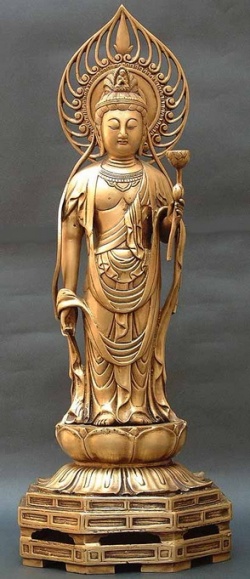Bamboo staff
Literally, "bamboo" (chiku, shitsu 竹) "spatula" (hei 篦). A stick, between a 50 cm and 1 m in length, with a slight bow in it (the shape of a spatula), originally made by wrapping strands of bamboo around a core and covering them with lacquer. It seems likely from the size and weight of this implement that it originally functioned as a whip, for an animal or person struck with it would be startled or stung but never seriously injured. By the Song dynasty in China the bamboo staff had become a part of the formal regalia of a Buddhist abbot, who wielded it as a symbol of authority when taking the high seat in a dharma hall and instructing or engaging in debate with an assembly of monks and lay followers. Abbots belonging to the Zen lineage, as depicted in their biographies and discourse records, occasionally used their bamboo staffs to strike disciples. Such use of the bamboo staff was understood to be instructive, not punitive: to disabuse the recipient of their stubbornly held views or startle them into awakening. In present day Soto Zen, the bamboo staff is wielded by the head seat (shuso 首座) in the dharma combat ceremony (hossen shiki 法戰式), as a sign that he/she has assumed the position of authority in a debate that is usually held by the abbot.
